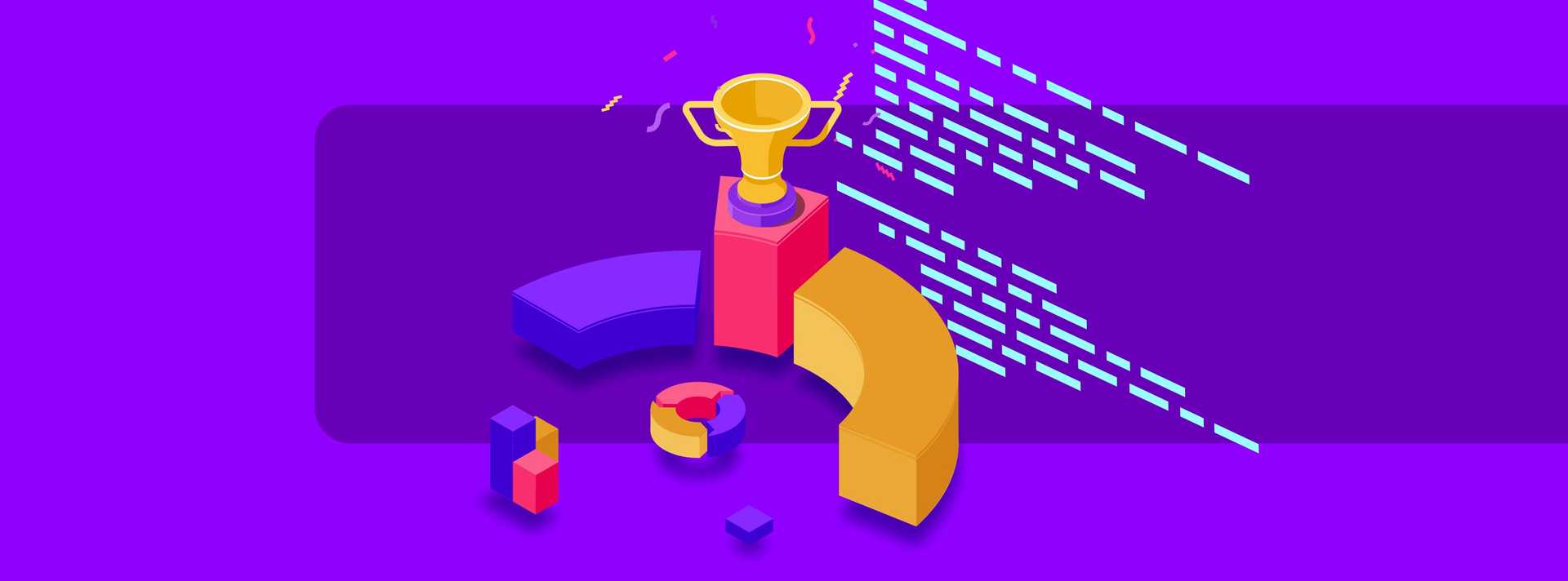
May 11, 2021
In our last infographic, JavaScript was the most popular programming language. What has changed in terms of the sizes in the last six months? You can find the answers in this infographic with key findings from our Developer Economics 20th edition survey, which ran between November 2020 and February 2021 and reached 19,000 developers worldwide.
Javascript is the queen of programming languages
JavaScript is the most popular programming language by some distance, with nearly 14M developers using it globally. More importantly, the JavaScript community has been growing in size consistently for the past three years. Between Q4 2017 and Q1 2021, more than 4.5M developers joined the community – the highest growth in absolute terms across all languages. Even in software sectors where JavaScript is not among developers’ top choices, like data science or embedded development, about a fourth of developers use it in their projects.
Python is conquering the world
Since it surpassed Java in popularity at the beginning of 2020, Python has remained the second most widely adopted language behind JavaScript. Python now counts just over 10M users, after adding 1.6M net new developers in the past year alone. That’s a 20% growth rate, the highest across all the large programming language communities of more than 6M users. The rise of data science and machine learning (ML) is a clear factor in Python’s popularity. Close to 70% of ML developers and data scientists report using Python. For perspective, only 17% use R, the other language often associated with data science.
Kotlin’s rise continues
The fastest growing language community in percentage terms is Kotlin. In fact, it’s one of the two communities – the other being Rust – that has grown more than two-fold over the last three years, from 1.1M developers in Q4 2017 to 2.6M in Q1 2021. This is also very
evident from Kotlin’s ranking, where it moved from 11th to eight place during that period – a trend that’s largely attributed to Google’s decision to make Kotlin its preferred language for Android development. Even so, Kotlin still has a long way to go to catch up with the leading language in mobile development, Java; there are currently twice as many mobile developers building applications in Java than in Kotlin.
Swift was recently outranked by Kotlin, after attracting slightly fewer net new developers in the second half of 2020 (100K vs 300K). Even so, Swift is currently the default language for development across all Apple platforms, which has led to a stagnation in the adoption of Objective C. This gradual phase-out of Objective C from the Apple app ecosystem is also matched by a significant drop in its rank, from ninth to 12th place.
The more niche languages – Go, Ruby, Rust, and Lua – are still much smaller, with up to 2.1M active software developers each. Go and Ruby are important languages in backend development, but Go has grown slightly faster in the past year, both in absolute and percentage terms. Rust has formed a very strong community of developers who care about performance, memory safety, and security. As a result, it grew faster than any other language in the last 12 months, more than doubling in size. Finally, Lua was also among the fastest growing language communities in the last year, mainly attracting AR/VR and IoT developers looking for a scripting alternative to low-level languages such as C and C++.
Sign up to our community to have your say in our next developer survey.
Recent Posts

August 27, 2025
How to Find the Right Learning Path When You’re Switching to a Tech Career
See post

August 22, 2025
Developer News This Week: AI Speed Trap, GitHub Copilot Agents, iOS 26 Beta Updates & More (Aug 22, 2025)
See post

August 08, 2025
Developer News This Week: GitHub GPT-5, VS Code 1.103 & Chrome 139 (Aug 8, 2025)
See post
